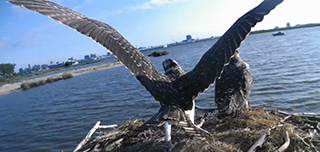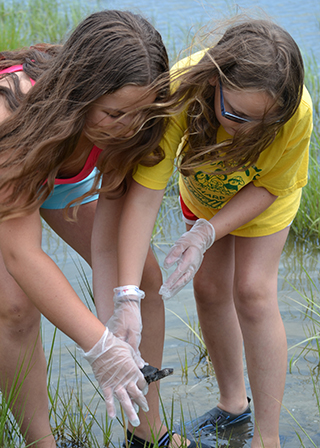The Maryland Port Administration (MPA) has led and participated in many projects that have improved wildlife habitat in the Chesapeake Bay region, from restoring woods and wetlands on bay islands to removing abandoned industrial debris from river shorelines.
The most dramatic accomplishments have resulted from the dredging process, which clears sediment from shipping channels. Some of the dredged material is being used to restore wetlands and eroding islands, including Poplar Island and Hart-Miller Island.
Poplar Island is now an important nesting ground for terrapins. Poplar Island, Hart-Miller Island, and the Swan Creek wetlands (near the Cox Creek placement site) offer critical habitat for migratory birds; both Poplar and Hart-Miller are listed as Important Bird Areas by the National Audubon Society. (Birdwatching opportunities can be arranged by contacting [email protected].
At Masonville Cove, on the Patapsco River, the MPA helped clean and restore a shoreline that was severely polluted by past industrial activity. Now, trails through the Masonville wetlands draw a steady flow of visitors who come to observe the many species of birds and waterfowl that gather there. In 2013, the US Fish and Wildlife Service named Masonville Cove as its first Urban Wildlife Refuge Partner.
The MPA also partners with the Maryland Department of Natural Resources to help restore the bay’s depleted stock of native oysters.

An “osprey cam” at Masonville Cove provides an up-close view of osprey raising their young.

Students release diamondback terrapin on Poplar Island.